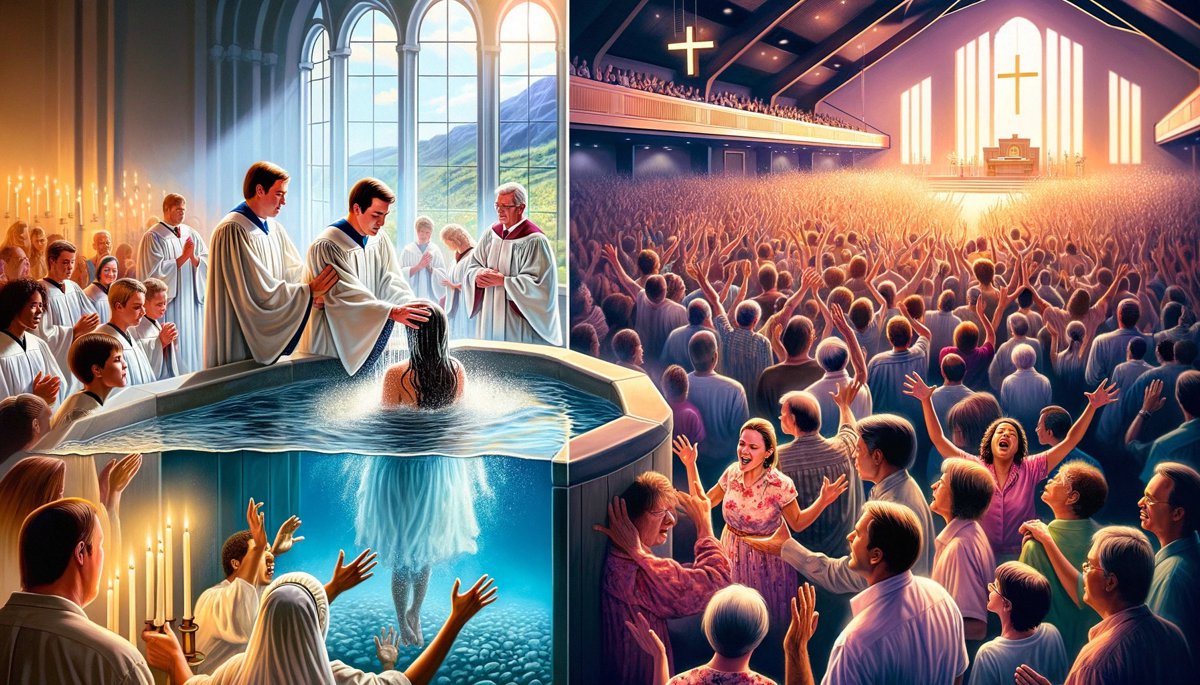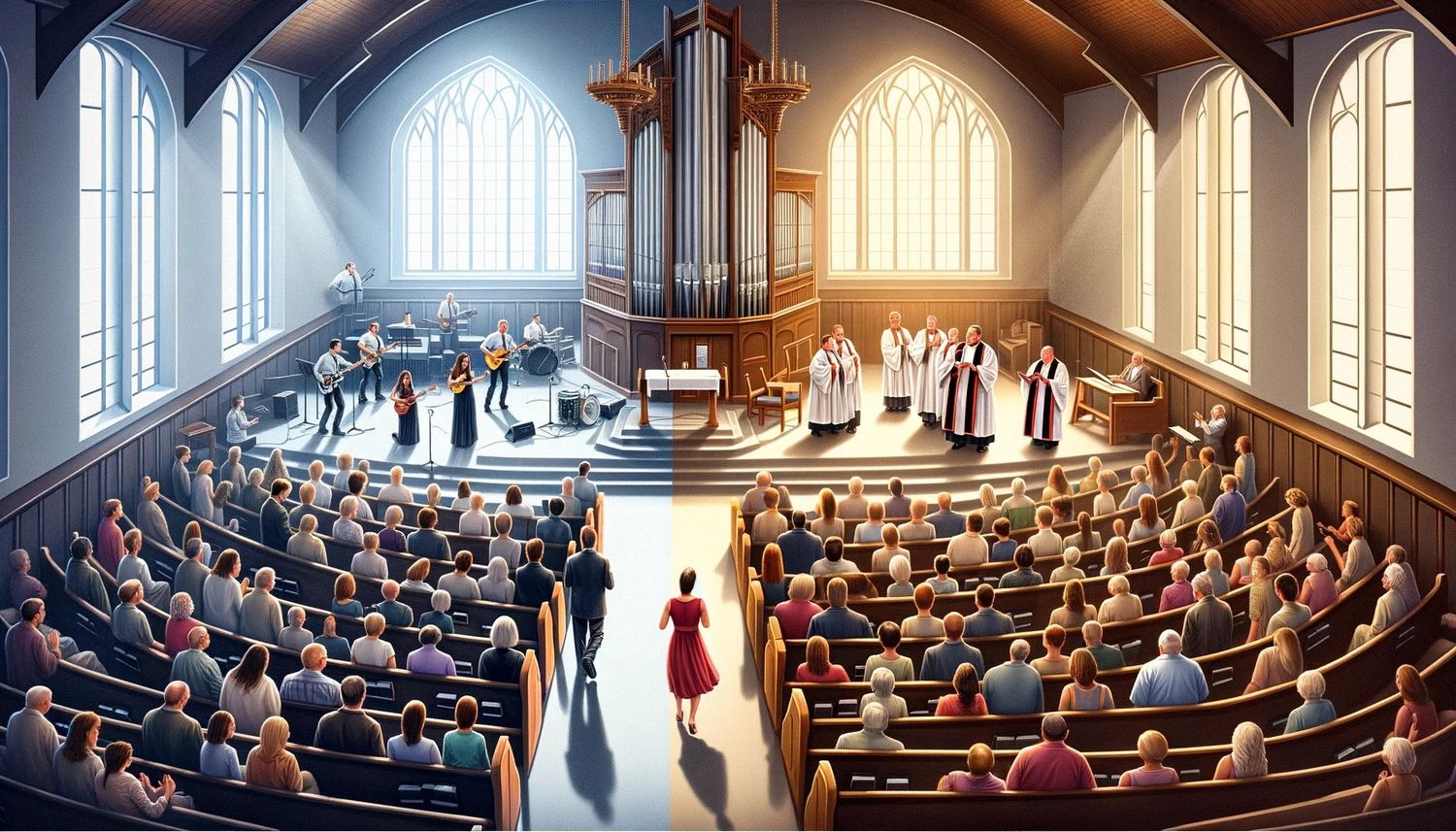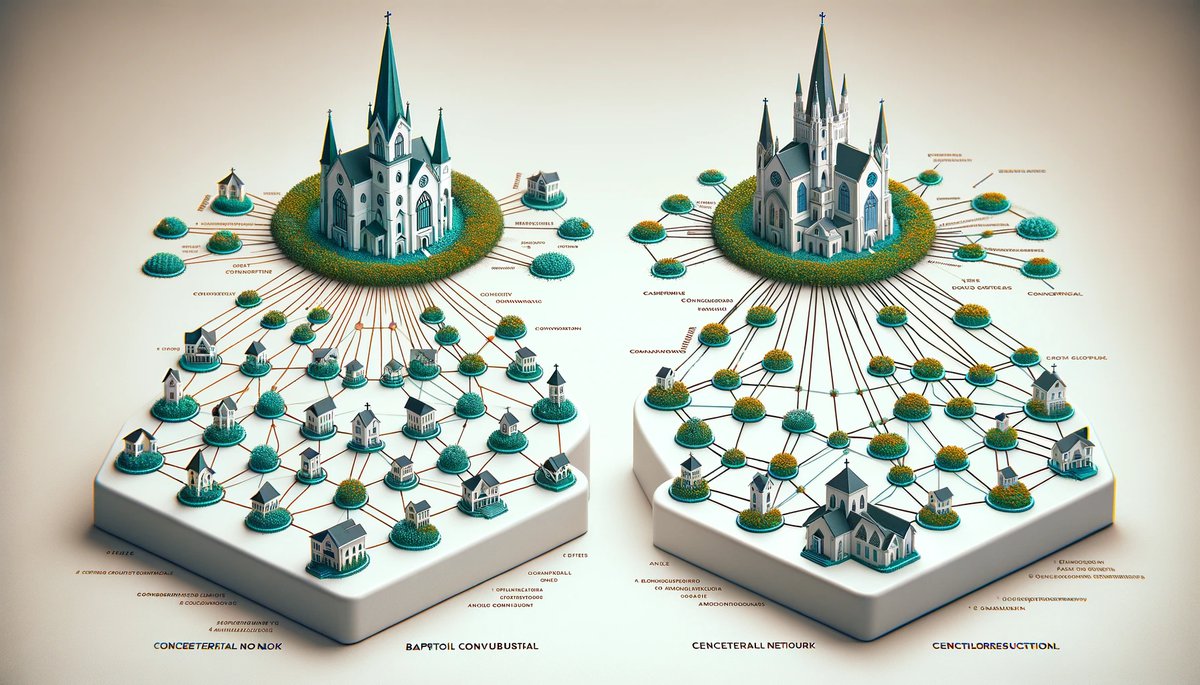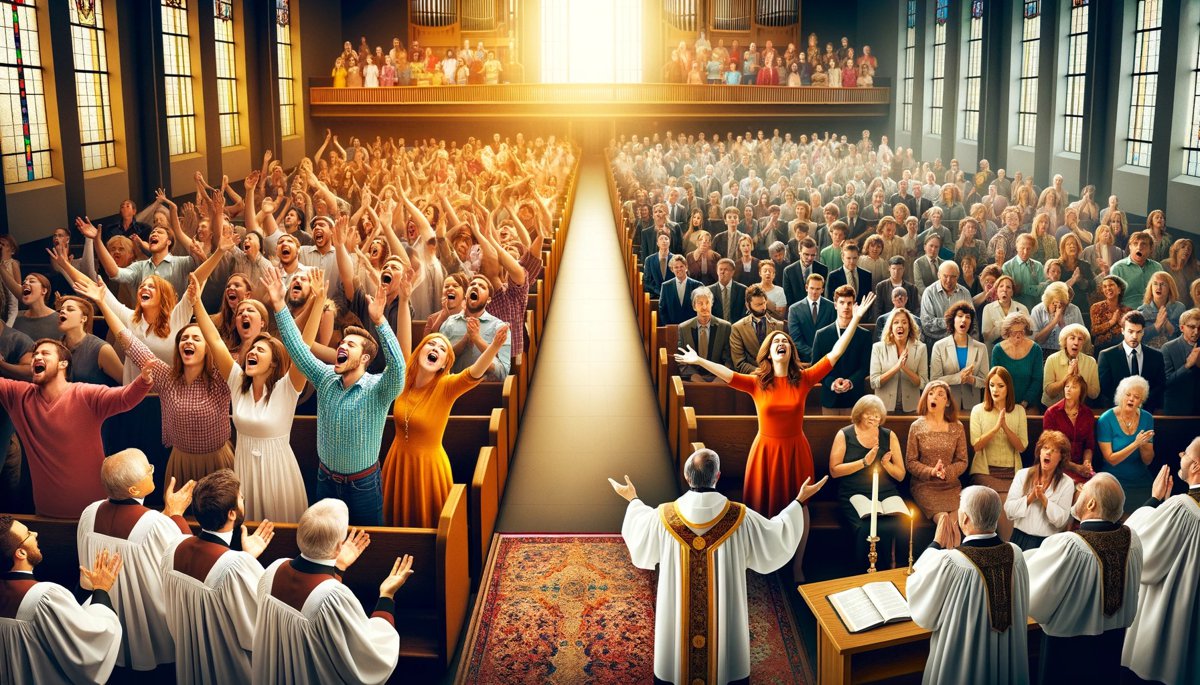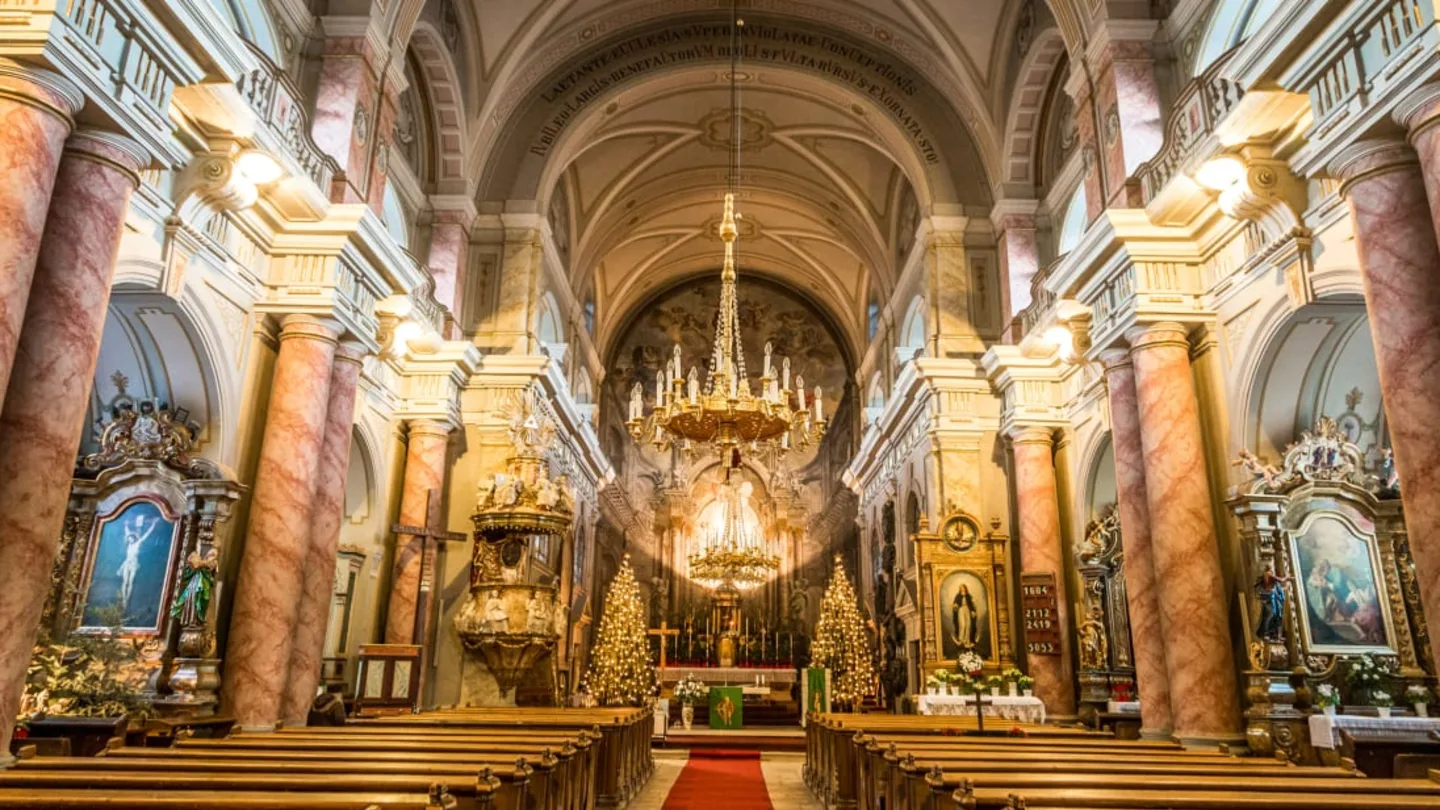Home>Arts and Culture>What Is The Difference Between A Church, Basilica, And Cathedral


Arts and Culture
What Is The Difference Between A Church, Basilica, And Cathedral
Published: February 15, 2024
Jason DeRose, Managing Editor at Christian.net, uses his expertise in religion and journalism to deepen understanding of faith's societal impacts. His editorial leadership, coupled with a strong academic background, enriches the platform’s diverse content, earning him recognition in both journalism and religious circles.
Discover the nuances between a church, basilica, and cathedral in this insightful guide to religious architecture and history. Explore the distinctions and significance of these iconic structures in arts and culture.
(Many of the links in this article redirect to a specific reviewed product. Your purchase of these products through affiliate links helps to generate commission for Christian.net, at no extra cost. Learn more)
Table of Contents
Introduction
When it comes to architectural marvels and religious landmarks, the terms "church," "basilica," and "cathedral" often surface in conversations, sparking curiosity about their distinctions. Each of these structures holds a unique significance, reflecting the rich tapestry of human history, culture, and faith. Understanding the differences between them unveils a fascinating journey through time, art, and spirituality.
Throughout the centuries, these edifices have stood as testaments to human creativity, devotion, and ingenuity. They have witnessed the ebb and flow of civilizations, offering solace, inspiration, and a tangible link to the past. As we delve into the definitions and nuances of churches, basilicas, and cathedrals, we embark on a captivating exploration of architectural splendor and religious heritage.
The intricate interplay of architectural styles, religious traditions, and cultural influences has shaped these structures into iconic symbols of human aspiration and reverence. From the grandeur of cathedrals to the serene beauty of churches and the historical significance of basilicas, each edifice tells a compelling story that transcends time and resonates with the depths of the human spirit.
As we unravel the distinct characteristics and roles of churches, basilicas, and cathedrals, we gain a deeper appreciation for the diverse expressions of faith, the evolution of architectural forms, and the enduring legacy of these sacred spaces. Let us embark on a captivating journey through the realms of art, history, and spirituality to discern the unique essence of each of these architectural wonders.
Definition of Church
A church is a place of worship and spiritual significance for Christian congregations, serving as a sanctuary for communal gatherings, religious ceremonies, and prayer. The term "church" originates from the Greek word "ekklesia," which means "assembly" or "gathering." This etymology underscores the fundamental purpose of a church as a space where believers assemble to express their faith, seek solace, and foster a sense of community.
Architecturally, churches exhibit a diverse range of styles, reflecting the historical, cultural, and regional contexts in which they were constructed. From the soaring spires of Gothic cathedrals to the humble simplicity of rural chapels, each church embodies a unique blend of artistic expression and spiritual symbolism. The layout of a church typically includes a nave, where the congregation gathers, flanked by aisles, a sanctuary, and often a raised platform for clergy to lead services.
Beyond its architectural significance, a church holds profound spiritual and cultural importance. It serves as a focal point for religious rituals, including the celebration of the Eucharist, baptism, weddings, and funerals. Moreover, churches often feature ornate decorations, such as stained glass windows, intricate altars, and religious artworks, which enrich the worship experience and convey biblical narratives and religious teachings.
In addition to its role as a place of worship, a church often functions as a hub for community outreach, charitable activities, and educational programs. Many churches host social events, support local initiatives, and provide aid to those in need, embodying the ethos of compassion and service integral to Christian teachings.
Furthermore, the concept of a church extends beyond the physical structure, encompassing the collective body of believers who form a spiritual community. This community, known as the "church congregation," fosters a sense of belonging, mutual support, and shared devotion, transcending the boundaries of individual identity to create a cohesive and inclusive fellowship.
In essence, a church represents far more than a mere building; it embodies the spiritual heritage, communal bonds, and timeless traditions of Christianity, serving as a beacon of hope, unity, and reverence for generations past, present, and future.
Definition of Basilica
A basilica, in architectural and religious contexts, holds a distinctive status, often denoting a significant place of worship within the Catholic tradition. The term "basilica" originates from the Greek word "basilikē stōa," which refers to a royal stoa or covered walkway. This historical association underscores the grandeur and regal aura that basilicas traditionally exude.
Architecturally, basilicas are characterized by their spacious, longitudinal layouts, often featuring a central nave flanked by aisles and terminating in a semi-circular apse. The design emphasizes a sense of grandeur and solemnity, with lofty ceilings, majestic columns, and ornate decorations adorning the interior. The exterior facade of a basilica typically showcases imposing features, such as towering spires, intricate carvings, and majestic domes, evoking a sense of awe and reverence.
In addition to their architectural magnificence, basilicas hold profound religious significance within the Catholic Church. They are often designated as pilgrimage sites or centers of veneration due to their association with sacred relics, miraculous events, or revered saints. The title of "basilica" is conferred by the Pope as a mark of distinction, signifying the church's historical, cultural, or spiritual importance.
Basilicas serve as venues for significant religious ceremonies, including papal masses, liturgical celebrations, and special events of ecclesiastical significance. Their role as sites of pilgrimage and devotion attracts throngs of faithful adherents and curious visitors, fostering a sense of spiritual connection and cultural enrichment.
Moreover, basilicas often house exquisite works of art, including intricate mosaics, majestic altars, and revered statues, which enrich the worship experience and convey profound religious narratives. These artistic treasures, combined with the architectural splendor, create an immersive environment that inspires contemplation, reverence, and spiritual introspection.
Beyond their religious functions, basilicas frequently engage in charitable activities, cultural outreach, and educational initiatives, serving as vibrant hubs of community life and spiritual nourishment. Their enduring legacy as centers of faith, art, and cultural heritage underscores their pivotal role in preserving and transmitting the rich tapestry of Catholic traditions to future generations.
In essence, a basilica stands as a testament to the enduring legacy of faith, art, and cultural heritage, embodying a timeless connection to the divine and serving as a beacon of spiritual inspiration and cultural enrichment for all who enter its hallowed halls.
Definition of Cathedral
A cathedral represents the pinnacle of architectural grandeur and spiritual significance within the realm of Christianity. The term "cathedral" derives from the Latin word "cathedra," meaning "seat," alluding to the presence of the bishop's throne or chair within the structure. This symbolic seat serves as the episcopal authority's focal point, underscoring the cathedral's role as the principal church of a diocese, where the bishop presides over religious ceremonies, administers sacraments, and shepherds the spiritual flock.
Architecturally, cathedrals epitomize the zenith of craftsmanship, innovation, and artistic expression. They often showcase a harmonious blend of architectural styles, reflecting the historical and cultural influences that have shaped their evolution. From the resplendent Gothic cathedrals adorned with intricate tracery and soaring spires to the majestic Romanesque structures characterized by robust arches and massive domes, each cathedral exudes a distinctive aura of magnificence and spiritual reverence.
The layout of a cathedral typically encompasses a central nave flanked by aisles, culminating in a grand apse or choir where the high altar is situated. The soaring ceilings, expansive stained glass windows, and ornate sculptures within cathedrals create an ethereal ambiance that elevates the worship experience, inviting contemplation and awe-inspiring reverence.
Beyond their architectural splendor, cathedrals serve as vibrant centers of religious life, cultural heritage, and community engagement. They often host a myriad of religious ceremonies, including ordinations, consecrations, and liturgical celebrations, embodying the rich tapestry of Christian traditions and rituals. Moreover, cathedrals frequently house priceless works of art, such as intricate tapestries, revered relics, and masterful paintings, which enrich the spiritual and aesthetic dimensions of the sacred space.
Cathedrals also play a pivotal role in preserving and transmitting the collective memory and heritage of their respective dioceses. They serve as repositories of historical archives, ancient manuscripts, and sacred artifacts, safeguarding the legacy of faith, culture, and societal evolution. Furthermore, cathedrals often engage in philanthropic endeavors, educational initiatives, and cultural outreach, fostering a sense of community cohesion and spiritual nourishment.
In essence, a cathedral stands as a testament to the enduring legacy of faith, art, and cultural heritage, embodying a timeless connection to the divine and serving as a beacon of spiritual inspiration and cultural enrichment for all who enter its hallowed halls.
Key Differences
While churches, basilicas, and cathedrals share commonalities as sacred spaces within the Christian tradition, they exhibit distinct characteristics that set them apart in terms of architectural, religious, and cultural significance. Understanding the key differences between these revered edifices unveils a nuanced tapestry of diversity and historical evolution.
Architectural Features
Churches: Churches encompass a wide spectrum of architectural styles, ranging from the simplicity of rural chapels to the grandeur of ornate cathedrals. They often feature a central nave flanked by aisles, a sanctuary, and a raised platform for clergy, reflecting the communal nature of Christian worship.
Basilicas: Basilicas are renowned for their spacious, longitudinal layouts, emphasizing a sense of grandeur and solemnity. They typically showcase imposing features such as towering spires, intricate carvings, and majestic domes, evoking a regal aura and architectural magnificence.
Cathedrals: Cathedrals epitomize the zenith of architectural craftsmanship, often characterized by soaring spires, expansive stained glass windows, and ornate sculptures. Their layouts encompass a central nave flanked by aisles, culminating in a grand apse or choir where the high altar is situated.
Religious Significance
Churches: Churches serve as places of communal worship, hosting religious ceremonies, including the celebration of the Eucharist, baptism, weddings, and funerals. They embody the spiritual heritage, communal bonds, and timeless traditions of Christianity, fostering a sense of belonging and shared devotion within the church congregation.
Basilicas: Basilicas hold profound religious significance within the Catholic Church, often serving as pilgrimage sites or centers of veneration due to their association with sacred relics, revered saints, and miraculous events. They are venues for significant religious ceremonies and attract throngs of faithful adherents and curious visitors.
Cathedrals: Cathedrals represent the principal churches of dioceses, where the bishop presides over religious ceremonies, administers sacraments, and shepherds the spiritual flock. They serve as vibrant centers of religious life, cultural heritage, and community engagement, embodying the rich tapestry of Christian traditions and rituals.
Cultural and Historical Importance
Churches: Churches often function as hubs for community outreach, charitable activities, and educational programs, embodying the ethos of compassion and service integral to Christian teachings. They hold profound spiritual and cultural importance, serving as beacons of hope, unity, and reverence for generations past, present, and future.
Basilicas: Basilicas engage in charitable activities, cultural outreach, and educational initiatives, serving as vibrant hubs of community life and spiritual nourishment. Their enduring legacy as centers of faith, art, and cultural heritage underscores their pivotal role in preserving and transmitting the rich tapestry of Catholic traditions to future generations.
Cathedrals: Cathedrals play a pivotal role in preserving and transmitting the collective memory and heritage of their respective dioceses. They serve as repositories of historical archives, ancient manuscripts, and sacred artifacts, safeguarding the legacy of faith, culture, and societal evolution.
In essence, the key differences between churches, basilicas, and cathedrals encompass their architectural features, religious significance, and cultural and historical importance, reflecting the diverse expressions of faith, art, and heritage within the Christian tradition. Each of these sacred spaces stands as a testament to the enduring legacy of human creativity, devotion, and spiritual aspiration, enriching the tapestry of human experience with their timeless presence.
Conclusion
In conclusion, the distinctions between churches, basilicas, and cathedrals encapsulate a rich tapestry of architectural splendor, religious significance, and cultural heritage within the Christian tradition. Each of these sacred edifices embodies a unique essence that transcends mere physical structures, resonating with the depths of human spirituality and creativity.
From the humble rural chapels to the resplendent cathedrals adorned with intricate tracery, these architectural wonders reflect the diverse expressions of faith and artistic ingenuity across different historical and cultural contexts. The architectural features of churches, basilicas, and cathedrals evoke a sense of awe and reverence, inviting contemplation and spiritual introspection.
Religiously, these sacred spaces serve as focal points for communal worship, religious ceremonies, and spiritual nourishment, fostering a sense of belonging, shared devotion, and cultural enrichment within their respective congregations. The role of basilicas as pilgrimage sites and centers of veneration, the principal status of cathedrals within dioceses, and the inclusive community outreach of churches collectively contribute to the vibrant tapestry of Christian traditions and rituals.
Furthermore, the cultural and historical importance of these edifices extends beyond their religious functions, encompassing charitable activities, educational initiatives, and the preservation of collective memory and heritage. They stand as repositories of historical archives, ancient manuscripts, and sacred artifacts, safeguarding the legacy of faith, culture, and societal evolution for future generations.
In essence, the nuanced differences between churches, basilicas, and cathedrals underscore the enduring legacy of human creativity, devotion, and spiritual aspiration, enriching the tapestry of human experience with their timeless presence. As we continue to cherish and preserve these architectural marvels, we honor the profound connections between art, history, and spirituality, perpetuating their legacy for generations to come.

